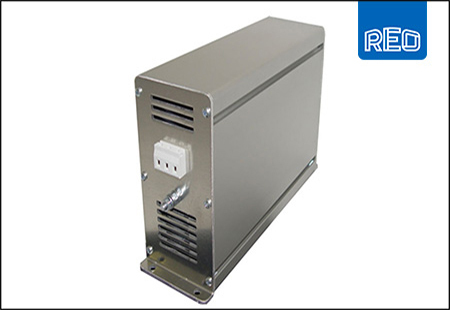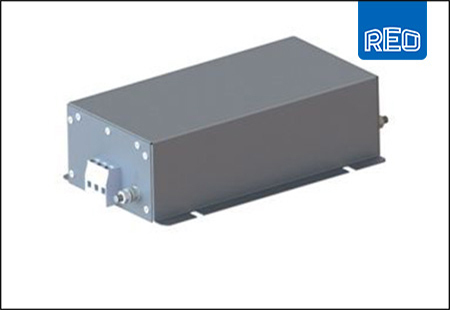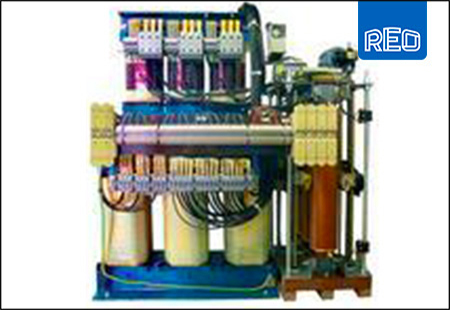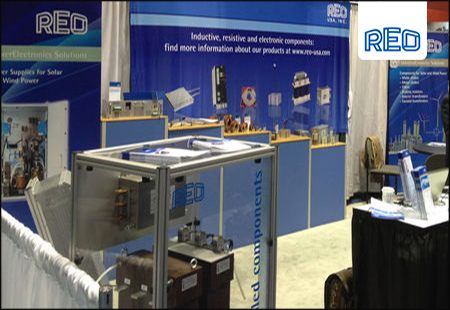MOTOR PROTECTION IDEAL FOR PUMPS AND DIFFICULT ACCESS APPLICATIONS
Frequency inverters, which normally have switching frequencies of 2 to 20kHz, produce considerable common-mode (asymmetrical) noise. The fast switching of the DC voltage causes voltage peaks in motor cables and the longer the length of the cable the higher the amplitude of the voltage peaks. The resulting fast-rising voltage (dV/dt) comprises many harmonic frequencies and the faster the rise time the wider the resulting harmonic frequency spectrum (above 150 kHz) and the worse the ripple is on the voltage sine wave measured between line and earth. This disturbance is a result of common-mode interference caused by the parasitic capacitance between various metal parts of the motor and earth and causes undesirable pulsed currents to flow. A new filter from REO provides a means of allowing the common-mode interference to flow back to the DC link instead of through capacitive coupling to earth. Mainly this technique is used to protect motors that are used in critical processes or the replacement of a motor is too expensive but it can also be used when leakage currents in parallel connected circuits cause interference.
Most modern motors have a variable-speed drive that uses a frequency inverter employing semiconductor devices (IGBTs). The switching techniques used to generate high rates of change of voltage can cause undesirable effects on the motor, depending on particular application requirements.
Long cable runs between the frequency inverter and the motor and fast switching times can contribute to the premature failure of a motor through bearing damage or insulation failure or other unacceptable phenomena such as power losses, high acoustic noise levels, and parasitic earth currents.
The conventional solution is to fit a low-pass filter at the output terminals of the frequency – inverter which reduces the differential – mode interference (Symmetrical) to a smooth sinusoidal waveform with a ripple content of less than 5%.
However, there are some instances where this solution is inadequate, particularly in applications where there are common-mode (asymmetric), high-frequency disturbances and the reliability of the motor is of utmost importance or the replacement of a motor would be expensive. Common-mode interference can cause capacitance coupling through the stator, rotor, bearings, frame, and connected equipment which will cause pulsed currents to circulate.
There is a solution to this problem which involves the combined use of a conventional differential mode and a common-mode output filter made by REO Inductive Components. This eliminates the bearing damage caused by heat and pitting as a result of circulating pulsing currents. There are other benefits as well…..
- Unlimited cable lengths between the frequency inverter and motor can be used
- Higher switching frequencies > 8kHz can be used
- Audible noise is reduced
- Reduced cable and eddy current losses so a smaller drive may be employed (cost saving)
- Additional filtering on the mains supply side is not required if the inverter has an integrated filter
- Radiated interference from cables is reduced to a minimum
- The unshielded motor cable can be used (cost saving)
- Hazardous voltages and leakage currents are prevented
Sinus Filter Plus ++® Applications
One typical application for the Sinus Plus++ Filter is for protecting the bearings of an underground pump motor which is used in a combined geothermal/solar panel heating system.
The cable run from the frequency inverter to the pump is very long and the water column provides a low impedance path back to the ground which encourages current pulsing through the motor bearings. To replace or repair the pump would be a very costly exercise.
An REO Sinus Filter Plus ++® is connected to the output terminals of the frequency inverter to reduce the common-mode disturbances that would otherwise cause premature bearing failure.
The general EMC of the equipment is also greatly improved.
Another application where the Sinus Filter Plus ++® can be helpful is when there are several motors connected in parallel to a single frequency drive, as in the case of a multi-story car park for instance where several ventilation fans are driven for one inverter. Not only is the total cable run very long but there is also a good chance of capacitive coupling between cables.













